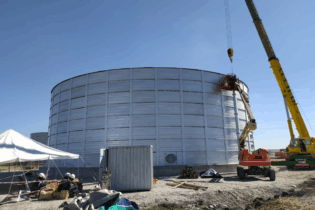Lake Manyara is drying up and experts have cautioned that unless drastic measures are taken, the water body could disappear in ten years’ time.
An ecologist with Lake Manyara National Park, Yustina Kiwango, said that the current water depth is only 30 centimetres as short rains are expected to start in a few weeks time. The lake could in the past drown an adult human but now it is reported that people can cross the waters with ease.Environment experts from Karatu, Babati and Monduli District that share the water body recently met in the Lake Manyara National Park to address the situation. Ecologists reveal that some 200 years ago the lake’s depth averaged six metres (6 000 centimetres) but at the moment it is 30 centimetres or 0.3 metres, more than 200 times less than the previous average depth. The experts also explained that this reduction of over 99.5% in water depth was last recorded in 1923 when a major drought spell hit most parts of East and Central Africa causing a number of rivers and lakes to dry up. The decreasing depth has apparently been happening in tandem with its fast shrinking water surface area. A recent visit to the park has revealed just a tiny section of the lake basin being covered with water with the rest being reduced to mud covering and alkaline dust. Experts, however, say that climate change has nothing to do with the lake drying up and instead put the blame on human activities.
“The major problem here is farming, the ongoing cultivation along the three rivers that pump water into Lake Manyara hasn’t only reduced water flow but it is also been causing massive siltation in the basin reducing depth and leading to rapid water evaporation,” said Mr Domician Njau, a conservator at Lake Manyara National Park.
Lake Manyara draws water from Kirurumo, Simba and Mto-wa-Mbu rivers along which major agricultural activities are now taking place including rice farming that demand plenty of water for irrigation, causing farmers to block river flows from their natural coarse into their farm.According to Mr Stanley Mruma, Karatu District’s Environment Officer, after meandering in local paddy and vegetable farms, the little remaining water carries mound of soil and other farm debris into the lake causing the current siltation. Described by travel and adventure writer Ernest Hemingway as the “loveliest lake in Africa,” Lake Manyara, around which the corresponding National park is mapped, covers more than 230 square kilometres of the Rift Valley. It is also the home of a diverse set of landscapes and wildlife.
Lake Manyara is the lifeline for the adjacent Lake Manyara National Park and should it dry up then among the country’s popular tourist destinations would be lost. Source: allAfrica.com






